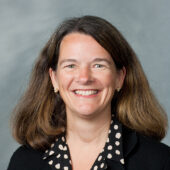Facts and Fake News: How to tell the difference

The pandemic and political polarization have made distinguishing reliable information from misinformation an increasingly difficult challenge. Two Wake Forest University librarians, Rosalind Tedford and Hu Womack, are experts on how mis/disinformation is used and consumed and how it impacts the world.
“As we think about the rise of mis/disinformation and the impact it has on our lives, our relationships, and our democracy, it is critical to understand why it’s such an effective tool, how to behave when we encounter it and how to avoid it as much as possible,” Tedford said.
Because our brains take shortcuts to decision-making, mis/disinformation is an effective tool to lead us down the wrong path.
“Things like confirmation bias (believing things more when they agree with what we want to be true or what we already believe), the illusion of explanatory depth (we think we understand complex things better than we actually do), and choice-supportive bias (once we have ‘paid’ for something we are more likely to rate it as positive even when faced with evidence that it was a bad choice) all play into why we believe things that aren’t true and why it’s so hard to get people to change their minds,” Tedford said.
Before sharing a sensational story with others, pause. Tedford and Womack offer the following tips and resources for how to be critical and careful consumers of information.
- Read past the clickbait: Headlines are often written to bring in revenue for advertisers. Read the article and you will often find the headlines don’t tell the whole story.
- Check your own biases: Do you want this to be true because it agrees with what you already believe or what you want to happen? Do you want it to be false because it’s about someone or something you love or have voted for?
- Check the source of that information: Use fact-checking sites like Snopes, Politifact, Factcheck.org or one of the national or international news outlets to verify information in the article is true. When using social media watch for bots and trolls (fake accounts programmed by an algorithm to spread misinformation and people whose purpose is to incite anger. )?
- Read laterally: Are other places reporting it? Is there more to the story? Whose voices in the story have not yet been heard?
- Don’t engage with mis/disinformation: Any attention you give to a piece of content, even if it is to proclaim that it is untrue, will make it more likely that others will encounter that content. Every comment, reply, like, retweet is essentially a ‘vote’ for that content in algorithms and can amplify it.
Two tools that can help readers determine the reliability of news content are:
- The Media Bias Chart – an interactive, evidence-based website to see where the news you are consuming lies on the bias spectrum.
- NewsGuard – a browser plug-in that uses visual icons to indicate which news sources repeatedly publish untrue or misleading information. There is a small monthly fee to use this service.
“We all need to pay for and consume news from reputable and reliable sources rather than only rely on free content from our social media feeds,” Womack said. “Good journalism is not free. If we as consumers are not subscribing, news outlets will either stop producing news or become more reliant on advertising revenue.”
Tedford and Womak agree that all of us are susceptible to mis/disinformation.
“We have to get past the notion that it’s a problem that other people have - it’s a problem we all have. So the best way to deal with it is to change our own news consumption habits to avoid being sucked into the mis/disinformation cycles.” Rosalind Tedford
Research librarians at Z. Smith Reynolds Library, Tedford and Womack teach a class for first-year students called “Misinformation And Disinformation On The Internet: Thinking Critically About Fake News, Junk Science And Fact-checking.” They also regularly lead workshops for faculty, staff and community groups.
Categories: University Announcements
Wake Forest News
336.758.5237
media@wfu.edu
Meet the News Team
Headlines
Wake Forest in the News
Wake Forest regularly appears in media outlets around the world.




